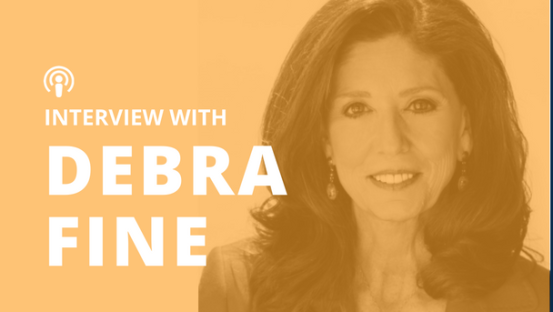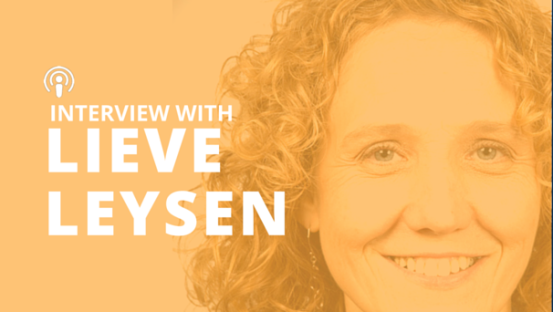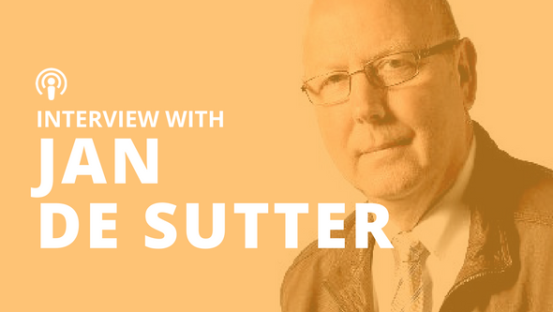Behind the Curtain: Interview with Ken Molay

Ken Molay is the go-to guy when it comes to creating engaging and innovative webinars. He’s been practicing new techniques, and then posting his best practice on his blog for over 10 years.
Listen to this podcast to learn about why you need to start creating webinars if you want to share your ideas easily across the globe. He covers the newest innovative techniques to engage the audience, as well as offering advice to webinar novices on how to seem like a pro.
Interview with Ken Molay
Q: To start off can you tell us how you got started with webinars?
A: I started out in the tech world initially as a programmer. I was a technical geek. I moved from there into product management and product marketing, and spent a few years as a head of product marketing in a Silicon Valley software company.
I started doing webinars as part of lead generation outreach, making sure that people knew about our products. It involved internal web meetings with our employees. It involved customer meetings where we could let our customers know about new releases and developments in the company, and of course it involved trying to find new customers.
As I did more and more of that I realized that I was recognizing and finding the things that worked well. I also recognized that when we would have on guest speakers, whether internally from our own company, or from other people outside, that they often had difficulty presenting well and effectively in the webinar environment, because it is different from public speaking in a room.
I thought there’s a real need here, a niche that isn’t being filled. People need to know best practices, and what works in the webinar environment. I thought, I can do that. So I did. I formed my own company in 2004, and I’ve never looked back.

Q: What do you find is the most inspiring thing about using webinars to share ideas?
A: The most inspiring is just the ability for people to share ideas with other people, that they couldn’t have practically done otherwise.
It’s just too impractical in terms of cost, in terms of logistics, in terms of time sync for people from around the world to fly somewhere and meet together. That’s still a very useful thing to do, and I don’t say that people should stop doing it. But when it’s impractical, and the ability to reach more people and more places is wonderful.
One of my clients deals with teachers from around the world. We regularly have webinars with people for their first time getting on a webinar. They’re nervous, they don’t know what it’s going to entail. Then at the end of it they’re so excited that they were able to share concepts, to share experiences with like-minded people from other cultures who are interested in the same thing from all around the world. That’s a great feeling.

Q:There are obviously a lot of things that are different than presenting to a live room. What are some of the biggest challenges webinar hosts face?
A: I think the first thing that people really see as a barrier is not getting visual feedback from their audience.
You can’t tell if your joke has gone over well. You don’t know if you have smiling faces. You can’t see people rolling their eyes, and know that you need to move on to another subject.
We always talk about presenters needing to use their body language well, and work the stage. But we often forget about using your audience’s body language, getting those feedback cues from them to tell you what you should do. A good, experienced room presenter learns how to do that either consciously or subconsciously.
A webinar environment is going to lose those kinds of cues, and so you have to learn to work with other ones. How do you engage your audience, and get feedback from them when you can’t see them?
Q: What do you do? How do you find out whether people are even tuning in?
A: The classic example was always when all of the web conferencing products started up, they all said “Oh, you should run polls.”
Just do polls all the time, and you can give your audience a little something they can click on, and they’ll feel like they’re actively participating. I used that for years. Now I find people start feeling like they’re lab rats in your experiment.

I want people to feel more engaged, and I want to get more constant feedback than having to do a break every now and then. I rely very heavily on typed chat. Whether you call it chat or question and answer in a specific product, I try to constantly let my audience know that I’m looking at what they’re typing.
I split my attention between what I’m saying and what they are saying, so that we can have that constant feedback back and forth. I mention names as I’m talking, “Judy just said that she’s had a similar experience. That’s great Judy, thank you.”
Just that little bit of recognizing an audience member, that’s something you can’t do in a room experience. If somebody says something, they interrupt you. You have to stop, listen to them, and let them say whatever it is they were going to say.
In a webinar environment it’s wonderful because you can instantly triage, and pick and choose the things that you want to use for your engagement interaction. That is a very powerful tool if you use it effectively.

Q: But then you get maybe a little bit of a surprise, it’s a little bit unpredictable, you don’t know what kinds of questions you’re going to get. How do you work surprising questions into the flow of your presentation?
A: What you’re talking about is if you’re taking questions verbally, if you’re opening up microphones, and you have to deal with that.
If they’re written questions, and things are coming in, you can choose to, in most products, turn off the public display of messages, so that other attendees can’t see what other people in the audience are writing.
Then you can pick and choose which messages you want to concentrate on, and which ones you want to deal with.
“I see that Dave entered a question asking me about what are best practices. Great, I’ll answer that.” Whereas if you notice that Bill said “I hate you, and I can’t stand your webinar product.” you just choose to ignore that, and nobody knows that Bill ever wrote that. Again it’s more powerful, and more practical than an in-room presentation in that sense.
Q: How do you manage the flow of your webinars? How do you get people to interact, and ask questions?
A: There are a number of techniques that I try to teach on this subject.
One of the main things is to constantly think from the audience’s perspective rather than your own. It’s very easy as a presenter to see that you have a large audience with dozens, or hundreds, or even thousands of people who are listening to you. You start saying “Well, I’d like to welcome you all. Does anyone out there have a question?”
What you need to realize is from a single attendee’s perspective, it’s just them. They’re sitting alone in front of a computer listening to you, and it feels like a one-to-one conversation. You need to address them in a singular, in an individual sense. “Hey, I would love it if you would type in a question for me right now. What do you think is the answer to this question?”

Never refer to the group as an entire entity. That makes it much more powerful, and much more directed towards each individual who’s listening, and makes them want to actively participate.
The other thing I do is attempt to mention names, as I said before. As soon as somebody hears a name being mentioned they become more attentive, because what if you say their name next, and they want to be ready for that.
Q: Do you ever directly question people in the audience? For example, you say “Judy, what do you think about this?”
A: I do. One of the places that that becomes the most useful is when you have people listening together in a room. Maybe you have a number of people gathered together, they’re watching on a screen, and listening over a speakerphone, or over a central computer speaker. How do you address them as individuals?
Then you can do exactly what you said. You pick one person that you know the name of in the audience, and say “Hey Judy, was that clear?” or “Judy, is there a question about that subject? Look around, does anybody have their hand raised for me?” Then you engage and involve one person to act as the proxy for the other people who are there. That can be a really good, useful interaction technique.
Q: Do you ever use webcams?
A: I use webcam occasionally. To do webcam well really involves a lot of extra considerations. I see people using webcam poorly all the time. Shot from a laptop, with a built in webcam, sitting on a desk, and it’s shooting up into the speaker’s nostrils. That’s not a good look for anybody.

Now that I’ve said that you’ll see it all the time! You see fluorescent overhead lights behind their head. When I use webcam I have a backdrop set up behind me, so people can’t see my messy office shelves in the background. I have reflector lights on either side of me so that I don’t get reflections into my glasses that I wear.
I have to worry about things like whether I am going to use my nice, big, geeky looking headset that makes me look like an air traffic controller, or do I use my shotgun microphone, or the mic on the webcam. Then I have to make sure that all of that’s working.
Then after all of those equipment and setup concerns, I’m always thinking about “How do I look on camera, am I professional? Am I holding myself with good posture in my seat? Am I waving back and forth in and out of the camera frame? Am I moving closer or farther away from the camera so that the focus is changing?”
All of these are things that are not natural by any means. While we can get away with them in a casual video phone conversation with somebody we know. But if you’re doing a business to business webinar, where this is your first introduction to the world, you want to look as professional as possible.
Q: Are there any benefits to using it, or is it really just only if you absolutely need to should you?
A: If you can do it well, it’s extremely valuable.
People love having that extra personal connection, see who’s talking, be able to put a face with the name, and they like picking up on the body language or facial expression cues.
Interestingly, I did a survey on this and found out that the things that people like as attendees are the exact things they don’t like as presenters. Attendees want to see the facial cues. Presenters say I don’t want people to see my facial cues.
If I’m rolling my eyes at a question subconsciously I don’t want people to see that. It’s a fine line, and it deserves extra training and extra practice in how to present yourself professionally when you are on camera.

Q: Tell us about the most memorable webinar that you gave, and what made it so effective?
A: Those are two separate questions. The most memorable webinars are the ones that are disasters, that have problems.
I think it’s true for all of us. When you tripped and fell in school, and everybody laughed at you, that stays with you the rest of your life somehow. Yet the good days where things just went well, and you happened to know an answer in class, those get forgotten.
For me the most memorable webinars are the ones where something bad happened, and I took that as a learning experience. It made it effective for me because I learned not to do it in the future. Have lots of backups. Now, when I do a webinar I have two separate computers, I have a really expensive power generator, I have two different phone lines on two different circuits. I want to really make it hard for the webinar to have a catastrophic failure.

Q: It’s more than just one plan B, it’s multiple plan B’s.
A: Yes. As many plans as you could put in place.
In terms of one that was really effective: I’ll go back to my own training. I give a lot of webinars on best practices and techniques. Sometimes people nod their head and say “Yes. I guess I learned a few things.”
But one that I really found to be very effective, and I got a lot of great feedback on, was talking about making your presentations nonlinear. Don’t just have an agenda, and move from A, to B, to C, to D, and end up with a summary. Instead, let your audience guide you.

“What should we talk about first?” Give them some choices. That’s where polling really can come into its own. Say “I want you as an attendee to help control the webinar. Should we talk about this more? Should we talk about it less? How’s my pacing? Should I speed up, or should I slow down? Where should we go after this topic?”
People love finding how they can use that to their advantage to really become more empathetic with their audience so that we’re all in the presentation together, and it’s not just a bunch of passive listeners being controlled by a presenter.
Q: No. It sounds like you turned it into more of an interactive experience, as opposed to you’re just consuming a bit of information.
A: Yes. What’s fun is I was able to use a lot of different techniques to show people you can do things using polls, you can do things using PowerPoint tricks, you can do things just with the way you set up your presentation materials. There are a lot of things that people don’t realize you can have more control over than you first learn when you’re starting to use a presentation tool either in PowerPoint, or in a web conferencing package.
Q: If you could offer one piece of advice to our listeners who might be presenters or public speakers who are looking to get into the field of webinars, and could use a bit of advice. What would that advice be?
A: The classic piece of advice would be rehearse, rehearse, and rehearse some more. But we all know that it’s trivial, so let me use a different one. Please think from the perspective of your attendee, not from your own perspective.
What do they care about? What are their priorities? What did they come to hear about? Are you delivering on their expectations? Are you setting up their expectations properly just when you start with your advertising, promotional, invitations, whatever it is. Make sure that at all times you are addressing your subject from the perspective of the people who are listening to you, rather than from your own selfish perspective.

Q: Stop being selfish?
A: There’s a phrase that I use all the time which is the exact opposite. You’re selfish, your audience is selfish, that’s not a bad word. Embrace that selfishness. Realize that everybody cares about what they care about. We’re human beings, we care about our own needs and interests. If you can grab onto that, and understand what your audience’s interests are, what they are selfish about, that’s going to make you the best possible presenter.
A bit about our speaker
Ken Molay has been producing and delivering business webinars since 1999. His background in public speaking, stage acting, and corporate training has given him a unique perspective on what it takes to create and deliver compelling and effective presentations.
Ken offers consulting and training services through his company Webinar Success. He also blogs about web conferencing. He has been quoted in the Wall Street Journal and industry publications as well as making frequent public presentations on the topic of more effective webinars.



